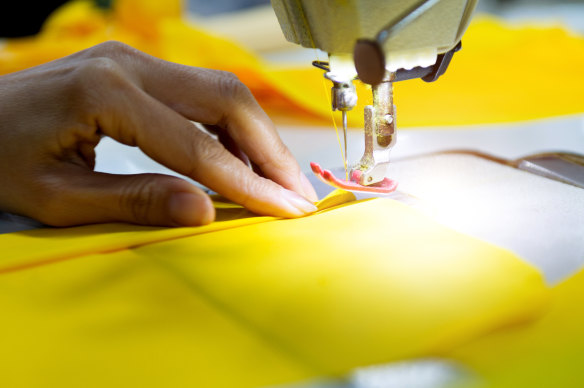[ad_1]
Australia’s clothing consumption crisis, including an addiction to fast fashion, cannot be solved through existing measures, such as a small levy on new garments, with a new report saying drastic action is needed to tackle waste and improve circularity.
These findings come as an analysis of data on textile and clothing consumption by think tank the Australia Institute found that Australians are the biggest purchasers of new clothing in the world per capita, with 56 pieces a year, ahead of the United States on 53 pieces. The UK is in third place with 33 pieces, ahead of China on 30.

Australians’ addiction to new clothes is creating a waste crisis.Credit: iStock
According to the report, Australians are also addicted to cheap clothing, with the average value of each new garment being $13, compared to $40 for their UK counterparts.
For years, Australia has been cited as the second-biggest consumer of clothing textiles behind the US but this new research, which incorporates data from the Australian Fashion Council and international sources, challenges this long-held view.
Each year, Australians discard more than 300,000 tonnes of clothing, the majority of which goes to landfill or offshore for processing or recycling. Although awareness of fashion’s footprint on the environment is arguably higher than ever, the volume of textiles sent to landfill is gradually increasing, while the proportion being recycled largely remains stagnant, at around five per cent.
Loading
One of the report’s more controversial recommendations is that a proposed four cent proposed tariff on every garment produced is grossly inadequate to have a significant impact on the creation of a viable domestic recycling system for textiles.
The report suggests the tariff, an initiative of the Seamless clothing stewardship scheme that has federal government backing, needs to be in the order of 50 cents per garment to create meaningful change.
“This [four cent levy] is a good start, but the levy is too low to change brand behaviour,” says Nina Gbor, who co-authored the report and is the director of the Circular Economy & Waste Program at the Australia Institute. “Seamless … is a step in the right direction, but must be accompanied by measures that drastically reduce waste at the source while building a circular economy.”
[ad_2]
Source link